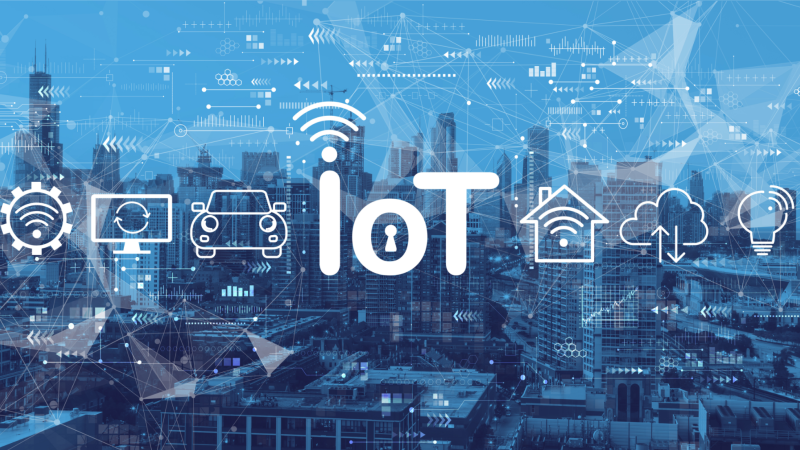Data Protection for the Internet of Things

As technology progresses over time, there are a few things that software and hardware developers alike tend to favor in their design: efficiency and convenience, for two, as well as a certain level of connectedness between different technologies. Smart devices of all sorts—cell phones, televisions, refrigerators—are constantly in communication with each other, making day-to-day life smoother in many ways. Unfortunately, the same technology that makes these connections possible also presents a host of unique cybersecurity challenges. In order to make use of the Internet of Things (IoT) while maintaining a solid security posture, it is necessary to address these challenges.
Challenges of IoT Security
Because traditional threat detection and prevention measures are primarily focused on keeping outsiders out, there are many aspects of the IoT that are often not taken into account. Rather than simply adding more locks to keep bad actors out, it is important for security professionals to understand the complex relationships and interactions among IoT devices. The interconnectedness of devices means that there is no strict demarcation between what is considered the inside versus what is considered the outside. Any security policy based solely on denying certain users entry is inevitably going to fail because the inner workings of the IoT are more nuanced than that.
Traditional methods of cyberthreat detection are also largely ineffective against insider threats, which can pose a significant danger to enterprises with a lot of intricately connected devices. Regardless of their motives or precise actions, insiders necessarily have authorized access to certain devices and areas of the network. Risky behavior tends to blend in with regular user activity, and restricting access is liable to also restrict an insider’s ability to do their job. Threat detection tools based on signatures or other known indicators of risk are not able to prevent insider threats. Even tools designed for insider threat detection are at risk of delivering so many false positives as to make their data unusable.
IoT and Insider Threat Risks
A single insider threat incident can cost a company hundreds of thousands of dollars, and two-thirds of companies experience more than 20 incidents per year. Accounting for disruption time, technology costs, direct and indirect labor, changes in process and workflow, cash outlays, revenue losses, and overhead, insider threats can cost an organization an average of over 15 million USD annually. Insider threats, especially those that arise when a disgruntled employee or former employee steals sensitive data to sell or take to their next job, may also cost an enterprise a great deal in reputational damage and give its competitors a leg up.
Attacks that attempt to take advantage of the intricate connections between devices can also have a significant impact on both individuals and organizations. The dangers are many: the most obvious is the potential for attackers to violate the privacy of their targets by accessing their sensitive information, or even hacking into smart cameras to surveil them, but it doesn’t stop there. It is also possible to hack devices such as cars, posing a very real physical danger to individuals, and even nuclear facilities. This is particularly concerning when it comes to insider threats, as insiders have more privileges and their malicious or negligent activity is harder to detect.
Best Practices and Solutions for IoT Security
While there is no foolproof way to ensure total security for all devices, accounts, networks, and data, there are measures that an organization can implement to make its IoT as secure as possible. Many of these seem fairly intuitive, such as incorporating security in the design phase, using tried and true methods and practices, prioritizing security measures according to potential impact, and promoting security updates, vulnerability management, and transparency across the IoT. It is crucial to ensure that devices are connected to each other and integrated into the IoT with caution and purpose, taking into consideration the necessity of continuous connectivity and the possible consequences.
Preventing insider threats in particular requires a narrower approach, with tools and solutions designed for the specific purpose. There are many different insider threat detection solutions available, each with its own features and abilities. An insider threat solution which brings together endpoint data loss prevention with incident response capabilities is likely to be most effective against insider threats within the IoT. Besides insider threat detection software, organizations can prevent these security incidents by fostering a culture of security and trust among employees, providing adequate cybersecurity training and transparency into security policies, and utilizing the principle of least privilege in a zero trust framework.
Conclusion
When so many devices are constantly connected and communicating with each other, it is especially important to establish a security strategy that prevents catastrophic cyberattacks or other incidents. Employees and former employees, contractors, partners, and anyone else with privileged access to any part of an organization’s network is capable of using that access to harm the organization from within. The IoT enables an increased level of connection, efficiency, and convenience for a company, allowing faster and smoother connections between various necessary systems, but it comes with its risks as well. Traditional threat prevention is largely ineffective against insider threats, and insider threat detection is paramount for protecting your IoT against attacks and accidents.
PJ Bradley is a writer on a wide variety of topics, passionate about learning and helping people above all else. Holding a bachelor’s degree from Oakland University, PJ enjoys using a lifelong desire to understand how things work to write about subjects that inspire interest. Most of PJ’s free time is spent reading and writing. PJ is also a regular writer at Bora.


![Putlocker Proxy | Putlocker online Alternatives Sites [100% Working] Updated List](https://technonguide.com/wp-content/uploads/2020/07/putlocker-800x450.jpg)



